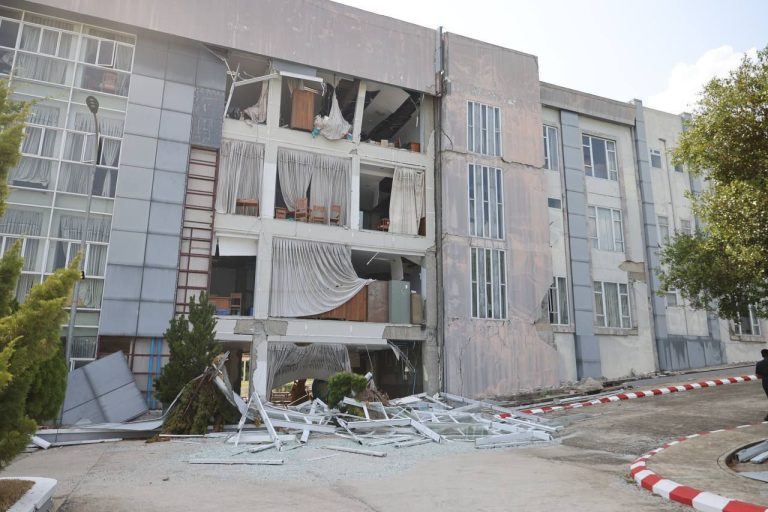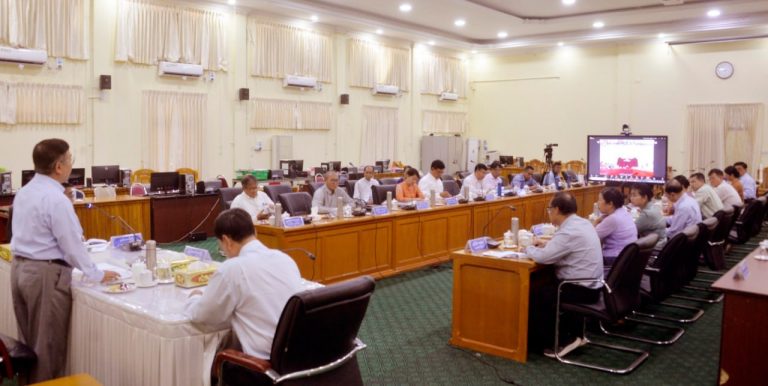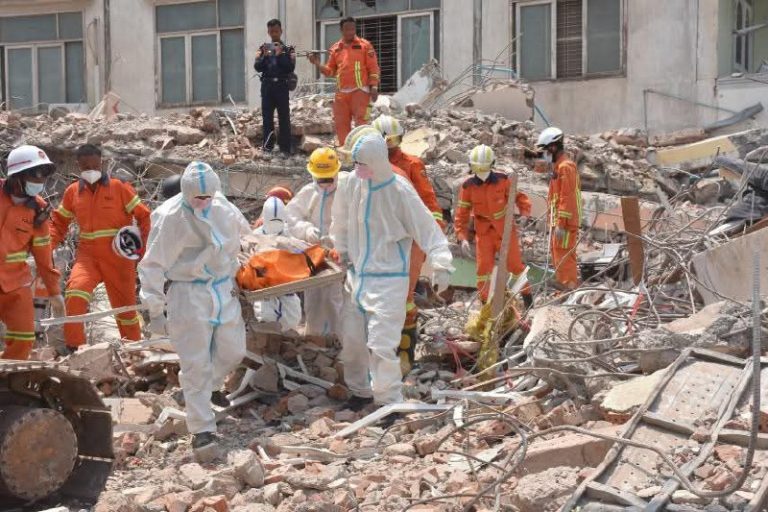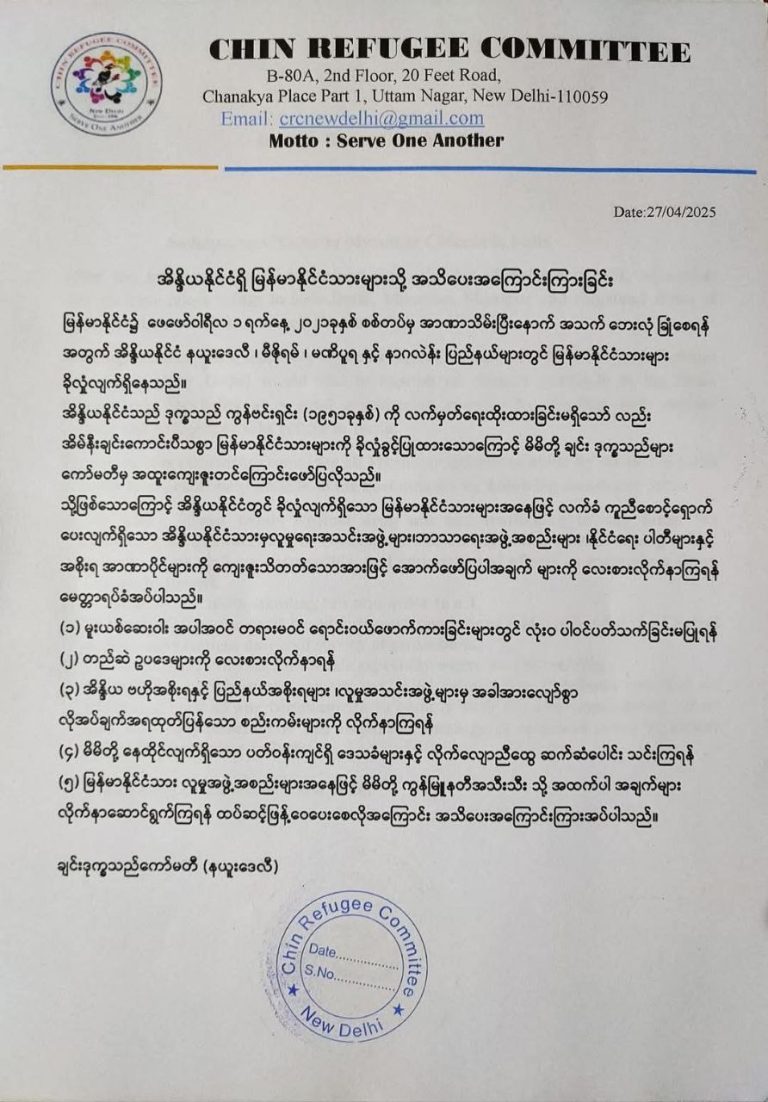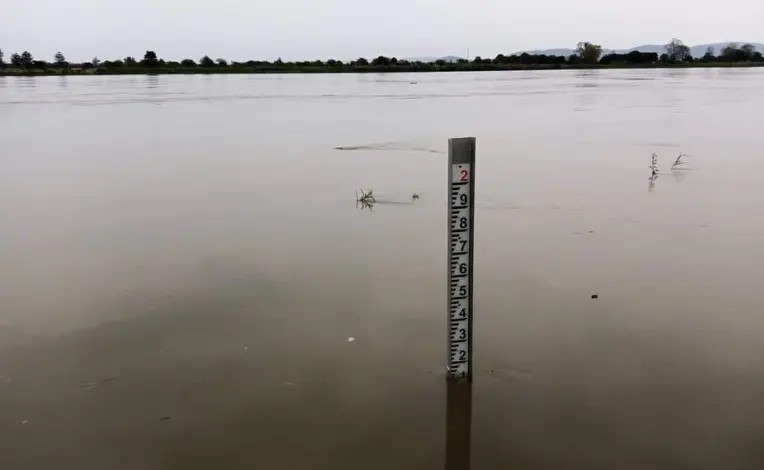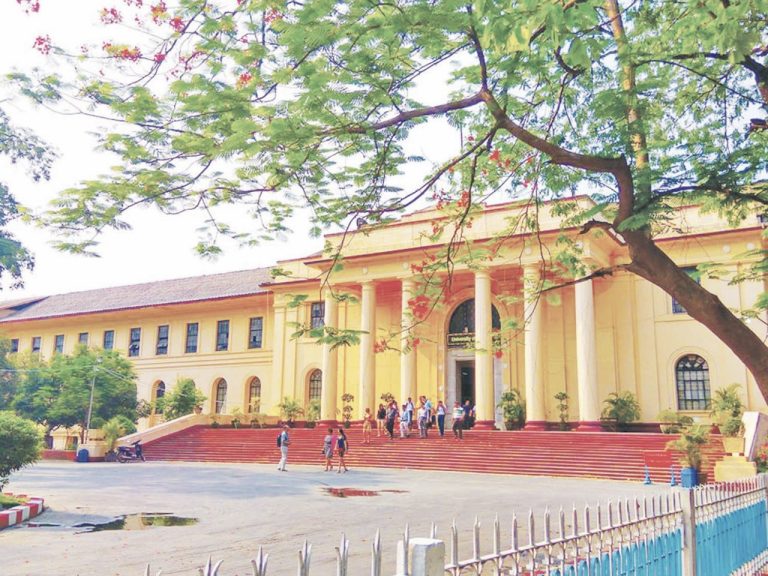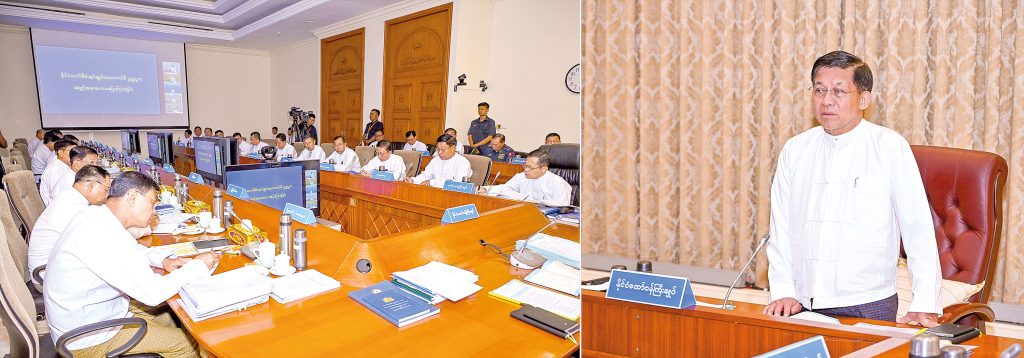
18 September 2024
Senior General Min Aung Hlaing highlighted that it is necessary to take lessons from damage to bridges in flooding triggered by heavy rains to build bridges with resilience to momentum of water flow systematically.
Chairman of the State Administration Council Prime Minister Senior General Min Aung Hlaing delivered a speech at the National Disaster Management Committee meeting at the Office of the SAC Chairman in Nay Pyi Taw yesterday afternoon.
Speaking on the occasion, the Senior General recounted that Typhoon Yagi and a deep depression from the Bay of Bengal caused heavy rains in some townships of Shan State (South), Nay Pyi Taw Council Area and other regions and states recently.
He noted that although weather warnings were issued, its forecast did not focus on unprecedented heavy rains in a short time.
The Senior General underscored that the disaster-ravaged regions had not experienced such severe conditions within 50 years. These regions suffered unprecedented loss and damage in heavy rains and flash floods at night.
He spotted that although nobody can avoid natural disasters, they can strive to mitigate the impacts of disasters as much as possible and emphasize rapid rehabilitation. The recent incident might be the worst loss in central Myanmar in history. As such, it is necessary to take lessons from the event and address many issues, he added.
He gave guidance that forecasts and warnings on natural disasters must be easily understandable for the general public so as to follow their advice.
He retold that this year, it rained heavily in the country for the whole monsoon period. These rainfalls cause humidity in the soil. The impacts of a recent typhoon caused heavy rains and flash flooding, consequently causing landslides, he added.
The Senior General commented that floating timber logs stockpiled in the rafts caused more damage and loss in flooding.
As such, the Senior General highlighted that it is necessary to take lessons from damage of bridges in flooding brought about by heavy rains and to build bridges with resilience to momentum of water flow systematically.
The Senior General explained that silting in rivers and creeks raises their bed levels, easily causing overflow of water and flooding.
He pointed out that gold panning and gemstone mining along Ayeyawady, Chindwin, and Thanlwin rivers lead to silting on the riverbed. Hence, it is necessary to dredge silt in parts of rivers and creeks.
He stressed the need to carry out maintenance of roads and bridges, as well as water outlet channels of dams and drains, without fail yearly.
With regard to rehabilitation, the Senior General noted that it is necessary to provide aid for families of the dead and injured and those who lost houses. A large number of houses were lost in the flooding, and rehabilitation measures must be taken for the people who faced losses in the incident.
He emphasized that currently, priority must be given to the reopening of roads and bridges so as not to interrupt public transport and commodity flow.
The Senior General disclosed that a total of 226 people were dead, 47 injured, and 77 are still missing, with 12 persons floating in Nay Pyi Taw Council Area, Kayah, Mon, Shan and Kayin states, Bago, Magway, Mandalay and Ayeyawady regions.
He added that a total of 1,915 houses were totally damaged and 201 partially damaged. A total of 158,343 homes were flooded. A total of 163,573 people are accommodated at the relief camps, and 234,535 people are staying at the houses of their relatives.
The Senior General underscored that the natural disaster triggered by the recent typhoon was a great lesson for Myanmar. Hence, all relevant ministries, region and state governments, Tatmadaw (Army, Navy and Air) and all military commands have to harmoniously carry out rescue, relief and rehabilitation tasks, he noted.
He instructed that crops in the damaged fields need to be systematically grown again. Arrangements must be made to provide agricultural cash assistance and loans to farmers for regrowing the crops.
The Senior General also said that it is necessary to categorize prioritized levels depending on volumes of loss and waste in rescue and relief measures, and all measures must be taken within six months.
He stressed that all reports must be compiled as checklists for the progress of work, remaining processes must be scrutinized continuously, and officials need to check work progress and report back.
Chairman of the National Disaster Management Committee SAC Vice-Chairman Deputy Prime Minister Vice-Senior General Soe Win explained occurrences of natural disasters in nine regions and states, damage of roads and bridges, including dams, broadcasting of such an event to the people in time, undertaking of rescue and relief measures at disaster-affected areas, distribution of relief aid to flood-stricken people, healthcare services and rehabilitation tasks being undertaken in water-ebbed areas.
The Vice-Chair 1 and Vice-Chair 2 of the management committee and officials reported the opening of relief camps for the flood-affected people, progress of rescue, relief and rehabilitation measures, distribution of relief aid and materials for reconstruction to affected areas, supply of electricity and safe water for the people, and releasing the weather forecast to the people in time, regrowing of crops, repairs of damaged roads and railways, running of flights, arrivals of humanitarian aid from AHA Centre and from India, donations to flood-affected monasteries and nunneries, reopening of schools in the flood-ebbed areas.
#Ref_GNLM #SAC #mtnews #mtnewsupdate


